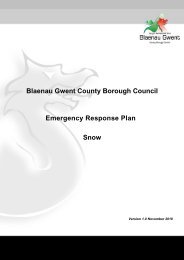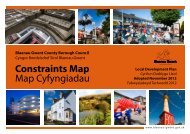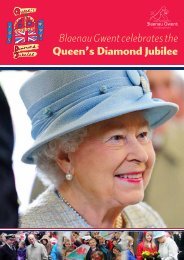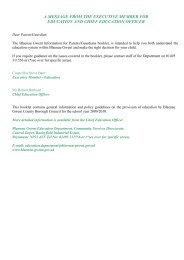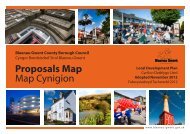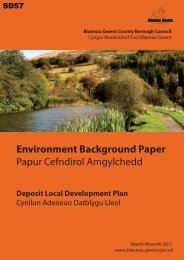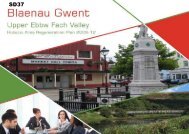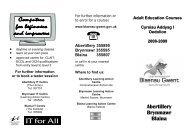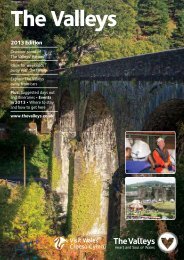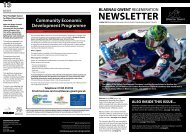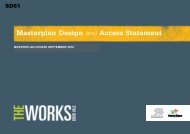Access Car Parking & Design - Blaenau Gwent County Borough ...
Access Car Parking & Design - Blaenau Gwent County Borough ...
Access Car Parking & Design - Blaenau Gwent County Borough ...
You also want an ePaper? Increase the reach of your titles
YUMPU automatically turns print PDFs into web optimized ePapers that Google loves.
PARKING GUIDELINES FOR DISABLED PEOPLE<br />
It is recommended that appropriately positioned parking places, preferably within<br />
50 metres of the facility served by the car park and which are adequate in size<br />
and number, shall be provided for people with disabilities. The size of each<br />
parking place and level of provision should be in accord with the<br />
recommendations in the Department for Transport's document ‘Inclusive<br />
Mobility’, ‘A Guide to Best Practice on <strong>Access</strong> to Pedestrian and Transport<br />
Infrastructure’ (2002).<br />
The recommended proportions of spaces for Blue Badge holders are:-<br />
<br />
<br />
<br />
<br />
For car parks associated with existing employment premises; 2% of the total<br />
car park capacity, with a minimum of one space.<br />
For car parks associated with new employment premises; 5% of the total car<br />
park capacity.<br />
For car parks associated with shopping areas, leisure or recreational facilities<br />
and places open to the general public;<br />
• A minimum of one space for each employee who is a disabled motorist<br />
plus<br />
• 6% of the total car park capacity for visiting disabled motorists.<br />
For car parks associated with railway stations;<br />
• A minimum of one space for each railway employee who is a disabled<br />
motorist plus:<br />
• for a car park with fewer than 20 spaces, one disabled space<br />
• for a car park of 20 to 60 spaces, two disabled spaces<br />
• for a car park of 61 to 200 spaces, three disabled spaces<br />
• for a car park with more than 200 spaces, 4% of capacity plus four<br />
disabled spaces.<br />
Disabled persons parking bays in off-street locations should be marked out with<br />
yellow lines and a yellow wheelchair symbol within the parking space. A sign, or<br />
if appropriate signs should be provided at the entrance to the car park to direct<br />
disabled motorists to designated parking spaces which, if the car park is not<br />
under cover, should also have raised signs at the head of the reserved bays.<br />
Signs inside the car park should show the most convenient way to the facilities<br />
served by the car park, with an approximate distance to those facilities. The<br />
marking out should comply with British Standard BS8300: 2001 ‘<strong>Design</strong> of<br />
buildings and their approaches to meet the needs of disabled people – Code of<br />
Practice’ as well as to the recommendations of the Department for Transport's<br />
document ‘Inclusive Mobility’, ‘A Guide to Best Practice on <strong>Access</strong> to Pedestrian<br />
and Transport Infrastructure’ (2002).<br />
On street disabled parking bays should be indicated by signs and marked out in<br />
full compliance with the Traffic Signs Regulations and General Directions (1994).<br />
Each bay should have a raised sign at the head of the bay to ensure that if snow




